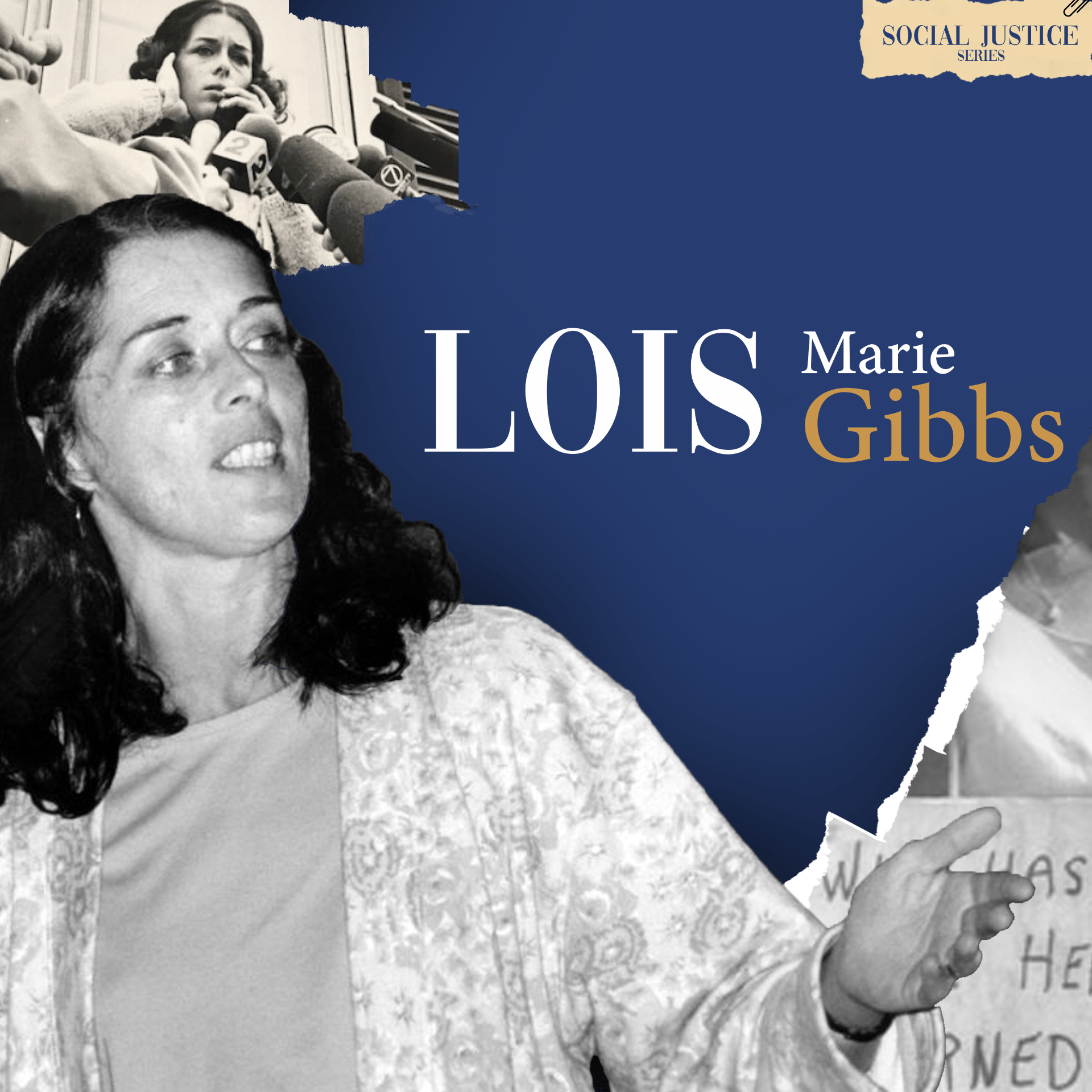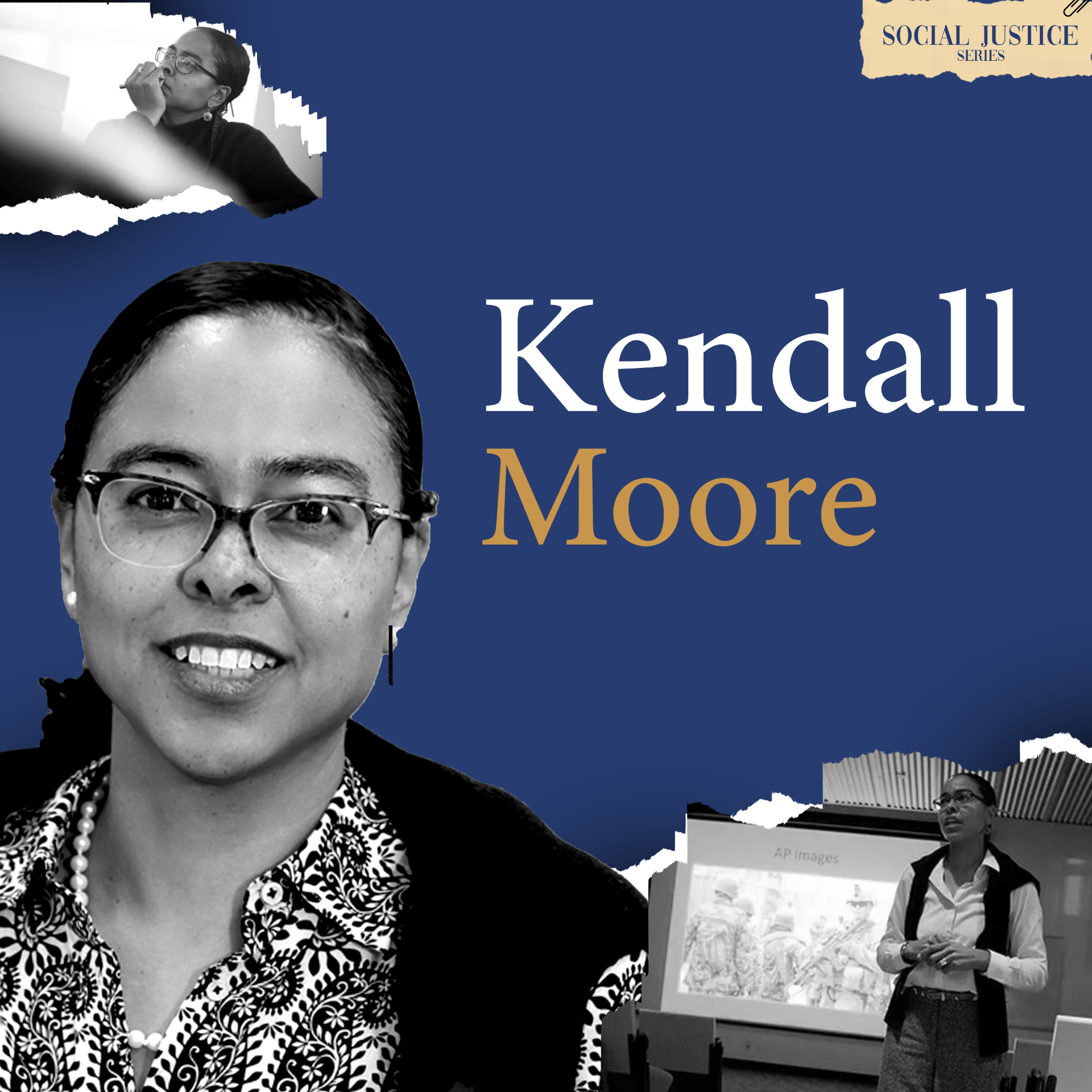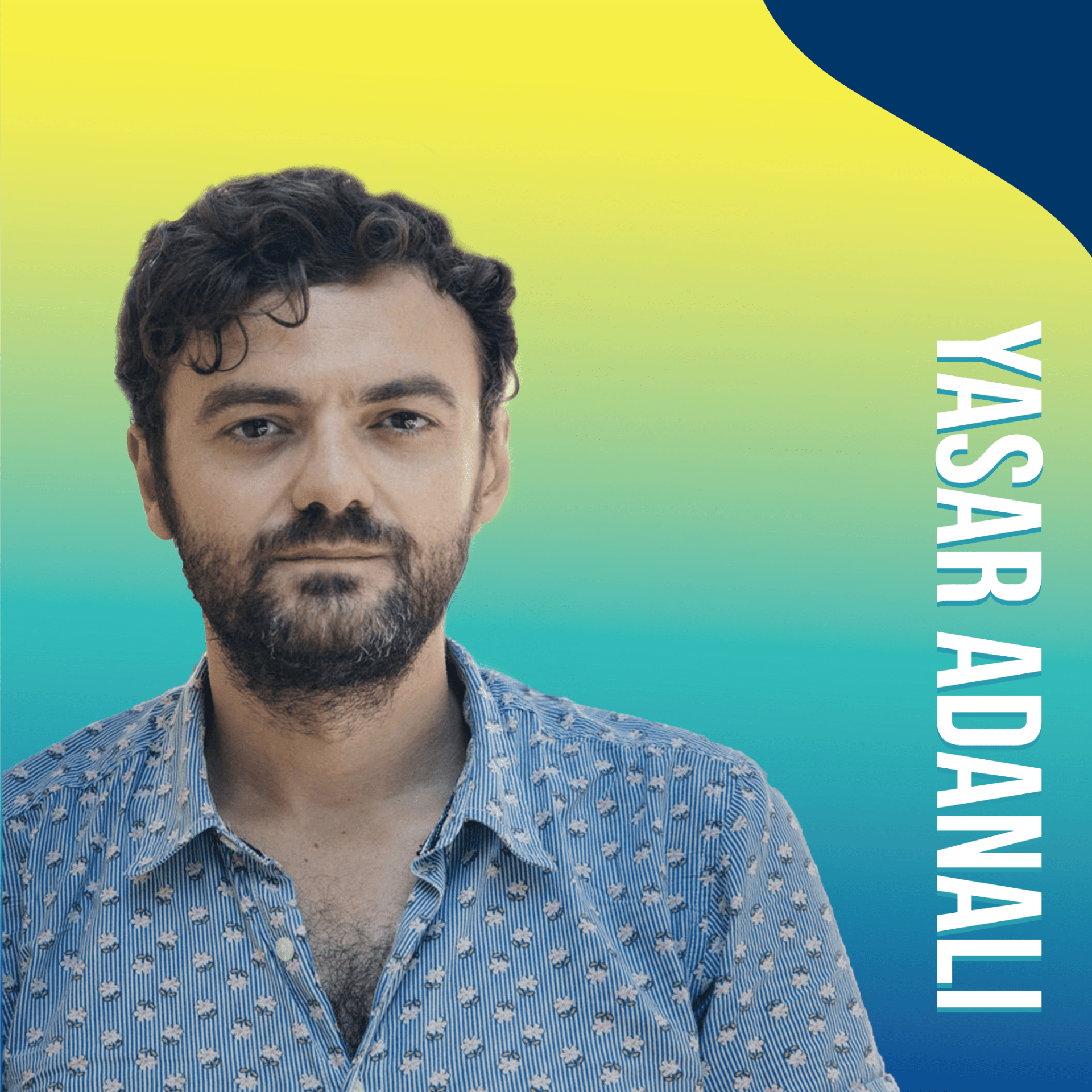
Episode #10
Mimi Sheller on the New Mobilities Paradigm
Join the Global Lab conversation with Dean Mimi Sheller on her work on mobility and climate resilience. In this episode, Mimi discusses how the current mobilities paradigm is constantly shifting, bringing forth questions about cascading climate risks, justice, and resilience.
Hosted by Seth Tuler, The Global School, WPI
New Mobility Paradigm
Guest Bio
Dr. Mimi Sheller is the Dean of The Global School and is an internationally recognized scholar and higher education leader, with fifteen years of executive leadership across academic units, research centers, and professional organizations. She helped to establish the “new mobilities paradigm” and is considered a key theorist in the interdisciplinary field of mobilities research and in Caribbean studies.
Transcript
Scroll to read more
Seth Tuler 00:00
Hi. We’re here today to talk with the dean of the global school, Dr Mimi sheller, and we’re going to be talking about her work on Mobility and Climate Resilience. So the first question I’d like to bring up is to hear a little bit more about the work that you’ve been doing. You’re a leader in the field of mobility studies, and can you give us a sense of what that work entails, what kind of topics you cover? Yeah,
Mimi Sheller 00:27
so I am an interdisciplinary social scientist, and I started working originally on the Caribbean region. And the Caribbean is a very mobile region, that is, it was populated by people coming from different parts of the world during the era of the slave trade and colonization of the Americas. And that brought in new species of plants and animals, people from Europe, from Africa, later, from India, from China, who all settled there, and then it became a region that generated a lot of cultural mobility, movement of migrants and diasporas, along with their music and political cultures, and just a lot of influence in different regions of the world. So I started thinking about, what’s the relationship between regions and mobilities, or movement. And when I was working in England at Lancaster University, there was a group of sociologists there who were also Studying the era of high mobility and globalization of the world, and all of the movement of capital and labor and culture around the world in the 1990s which was like a period of globalization, and when we sort of met up and started talking about my sense of mobilities coming from the sort of colonial and post colonial period and understanding of the world, and their sense of kind of European globalization. We realized that there was the need for a kind of new conversation about mobility that we called the new mobilities paradigm. And it was a way to talk about uneven mobility and power differences in mobility histories of differential mobility of different people and different parts of the world. And to really kind of move past the conversation that had been about globalization and the idea like we’re all more mobile now, and to really kind of reposition that and say, well, actually, many people had already been coerced into global systems of mobility, through the transAtlantic system of slavery, but also in other parts of the world, and that we needed to think about modern and contemporary mobilities in terms of that longer trajectory of power and struggles for social justice.
Seth Tuler 02:58
Yeah, it sounds like it’s a much more critical way of thinking about what is mobility and what its effects are. It also it strikes me that you’re both talking about people, but also of goods, services and ideas.
03:15
So
Seth Tuler 03:17
in the work that you do about mobility, do you differentiate amongst those? Or how does that? How do you think about movement? I guess it’s very interesting to me. Yeah. So,
Mimi Sheller 03:29
you know, the field has different people, practitioners involved in it, and what happens is, you get some people who are specialists in, for example, transportation. And so there’s a lot of interest around sustainable transportation, active transportation. How do we shift beyond the system of automobility that’s been the dominant system of ground transportation in the 20th century, and then kind of built the infrastructure that we live in now and the land use patterns. But then there’s people who study, for example, tourism and tourist mobilities, and there’s people who study migration and mobilities of migrants. And then there’s, as you say, the idea of looking at how ideas move, how information moves. And so we also, from the beginning, we’re looking at mobile information and communication technologies, the circulation of texts and images, and things like policy mobilities. So you’ll find different pieces of the field, maybe more focused on one area or another, but also you’ll sometimes find a convergence of those things, because we were also influenced by the field of science and technology studies, which kind of looks at how different systems intersect and form what we call assemblages. For example, if you think about a tourist destination, at that destination, you have mobilities of the tourists, but you. Also have the food that has to be imported to serve at the restaurants. For the tourists, you have the labor and the workforce who often have had to move to be at that place to work there. You’ve had hotel and financial kind of investment that’s moved around the world and is often part of these big transnational hotel chains. You have cruise ships coming and going, you have airline systems, you have ground transportation, and then you have souvenirs and photos and all of the things that tourists kind of take from a place. You also have plants and animals that then get enmeshed in that kind of tourist location. So I like to sort of think of how all those things come together and form a kind of constellation of mobilities.
Seth Tuler 05:44
Can you tell us a little bit about the way that the assemblages of all these mobilities can contribute to risk from different kinds of hazards or climate change?
Mimi Sheller 05:56
Yeah, so the field and the interest in mobility, I think one of the big things that jump started it was the sense of climate risk, and that we were very much aware, starting in the 1990s of the global warming greenhouse gasses and the role of transportation in driving climate change. And so a lot of the interest initially came from, you know, environmentalists and people who wanted to think about, how could we reduce use of fossil fuels? And so in that sense, mobility that’s dependent on fossil fuels is a problem. We had ideas about, why don’t we have smaller, softer forms of transportation? Why do we all have to be in big SUVs, right? Which use up more energy? They’re also dangerous, and they have risks to pedestrians and cyclists and other users of public space and public streets. So there was a combined sense of both that there’s a environmental climate risk to these kinds of vehicles that I think of as not very energy efficient, and there’s also a health and safety risk, and that those risks are unevenly distributed. So we study after study has shown that black and and brown people in the United States are far more exposed to those risks of our transportation system, bringing
Seth Tuler 07:33
it again to this idea that the mobility studies looks both at transportation systems, for example, but also ideas and information. And you mentioned policy mobility, and I’m wondering about how systems should be organized, or how infrastructure should be developed, and what it means to develop. Are these ideas that you also look into about the way risks emerge in a community or in a state, before and after disasters. I’m thinking about recovery from disasters too, because the ideas about how to build the kind of social technical system or the city, is an idea that was brought from somewhere else, and that creates new risks in a place that might not have been before.
Mimi Sheller 08:19
So there’s an argument that says, the more complex our systems have gotten, the more risk there is of these kind of unintended consequences, and that there’s cascading risks when you have many complex interlocking systems, as in contemporary urbanization. So when everything, for example, depends on electricity to work and on computers and software, if your electric fails and your software and your computer system goes down right, suddenly, that has all sorts of cascading risks, where you can have power outages that are then accompanied by lack of communication infrastructure. And turns out that water pumps don’t work, and so you can’t get water up into skyscrapers, and the elevators stop working. So you know, people are stuck, and then maybe they can’t get their cars started right, and so they can’t even evacuate. There’s all those sorts of compound, cascading risks, which is one way to think about it. Of course, when we face hazards in our in whatever our environment is, a kind of basic human and more than human response is to flee, right, to move away from the hazard. So mobility is also very important, as you say, to resilience, because part of a resilient system is that it allows for animals or people or even plants, in their slow way, to move as their environment changes. So you know, if you’re a plant and if. You’re faced with lack of water, that species will, you know, recede from the drought area and will move to an area that has more water, or if there’s extreme heat, right? Trees will gradually move to different places. So plants move. There was just a story about an area where there’s these rabbits, some kind of wild rabbits, and there it’s in California, I think, and they they live in what’s usually a dry riverbed area which is now flooded, and their normal response would be to move to higher ground, but all of the higher ground has been taken by humans, and so someone’s actually out there rescuing these rabbits from the flood. They’re like sitting on little islands of land, and they’re going on in boats and sort of trying to get this rare rabbit species to higher ground. So people need to move also, and it’s a form of resilience, the
Seth Tuler 10:56
way that in oncoming disasters like hurricanes, people are supposed to evacuate. Some people can and some people can’t, because of the way that this transportation is set up, or the kinds of resources that people have. So it may be that the more vulnerable people they they don’t have mobility,
Mimi Sheller 11:15
right? They stay. We saw that, in particular with Hurricane Katrina in New Orleans that there was a really unequal evacuation, where people who had cars were able to evacuate and those who did not have cars, who were lower income, people who were relying on busses or public transportation. Well, they got stranded there because there was not enough transportation to get out of the city, and that’s when we saw the sort of collapse of this urban environment, and people drowning and people on their rooftops needing to be rescued, because they didn’t have that automobility, that access to cars, to self mobilize, which is a kind of privilege. It’s a kind of security that a lot of Americans take for granted, but many people in our country don’t have access to cars, and they’re the ones that are suffered the most from these kinds of environmental
Seth Tuler 12:12
Yeah. Katrina really show how that difference is very racialized and also associated with economic privilege or poverty,
Mimi Sheller 12:21
right? But then the flip side of that is 2017 when hurricanes Irma and Maria hit the Caribbean islands, many islanders did have to evacuate and leave their homes and a big percentage of the population of Puerto Rico and the US Virgin Islands, because they’re US citizens, they could come to the mainland. But what happened is the hurricane took away jobs and employment opportunities, and so people moved away. But what that does is then people are displaced, and they feel like they can’t get a foothold back in their home. Then tourists came in, or investors or cryptocurrency bros, and they kind of move in and take over the place. And so a lot of people also have that feeling that they were forced to move and didn’t want to.
Seth Tuler 13:12
That’s interesting. The people who lived there were displaced, and now a new group comes in and actually now continues to displace the people who were originally there, yeah, you mentioned trees and the rabbits moving. How much work has been done about creating or thinking about corridors for flora and fauna ability to migrate in a changing climate, and how can they do that?
Mimi Sheller 13:40
So that idea of corridors of safe evacuation is really important for us to think about in terms of human migration, also especially in the face of climate catastrophes, is where do we have kind of pre determined advanced planning to evacuate people and to allow corridors of free movement, so that folks who are very affected by urgent, you know, life threatening disasters can move somewhere else. And really what we’ve seen in in the world is is the opposite. What we see is countries putting up borders and barriers and tightening their migration rules and regulations and actually keeping people out. And what that has done is it’s driven people who have been affected by climate change, even if it’s not a sudden onset event, there can be slower kind of effects on agriculture and on communities ability to keep farming and surviving. And so that drives what appears as economic migrants to move, but really they’re driven by climate as well, and they have no place to go and they’re not allowed. To move, and so they resort to these very dangerous situations of crossing the desert at the US Mexico border crossing the Mediterranean to get into Europe. And we have 10s of 1000s of people who are dying at those borders because of the way our system does not allow for safe corridors of human movement,
Seth Tuler 15:20
yeah. I mean, it’s tragic, and it again highlights the way that mobility, or the access to mobility, or the ability to be mobile, is very differentiated among people and places. And then again, it’s often racialized,
Mimi Sheller 15:38
yeah, and often those people say, if they’re coming from Central America, which has been heavily affected by climate change, as well as the social violence that then spins off of the sort of collapsing farming system, and the people you know placed displaced into cities, And then gangs and paramilitaries with weapons, and then that drives people out. Well, people often, if they move, they still they don’t want to necessarily like come to the US and stay here. They would maybe like to go back to their country. And it used to be easier for people to go back and forth between the US and Mexico, for example. And what’s happened is the hardening of border walls and systems of fences and deportation and all of that has made it much harder for people to come and work a little bit and then go home again.
Seth Tuler 16:34
That brings me back to the idea of resilience, and the way that mobility is related to resilience of communities and organizations or groups of people, and that these barriers, in a way, prevent the emergence of resilience. And I’m wondering if you could speak to that a little bit, and how this factors into some of the work that you do.
Mimi Sheller 16:58
Yeah, so I like to think about the concept that I call mobile Commoning. And mobile Commoning very much relates to the kind of resilience you’re speaking about. And it’s the notion that before we had passports and visas and border walls and things like that, when we think of the Native American inhabitants, for example, of North America, they moved seasonally. They moved across large territories. They would stay in certain place, you know, by somewhere where they could go fishing and get food in a certain season, and then maybe move inland to a different area, or move up into mountains or down at different seasons of the year. Well, that kind of movement of people is a form of resilience. It’s how we relate to our environment in a ecologically resilient way, and we’ve lost the ability to do that is in so far as people became, you know, settled settlers, what we call settler colonialism, fenced off places, fenced off environments, made people stay in place, made private property ownership the basis in a way of citizenship and and having like a sort of power to self determine one’s own mobility and dwelling so mobile, Commoning is a way to think, Okay, what would the opposite of that be? What does it mean for us to share space, to share environments with other people, but also with other living things, and to move through environments as a commons and as a form of kind of sharing with each other and with both humans and Non Humans, in a more careful way, where we kind of limit our impact, in a sense, and So for me, that’s a social and ecological form of climate justice would be to move towards greater possibilities for mobile Commoning.
Seth Tuler 19:09
Can you give an example of how you would think about implementing an idea like that?
Mimi Sheller 19:16
Well, one area where the concept has been used is actually in the migrant caravans that moved from Central America, from Honduras and Guatemala and El Salvador and started moving up through Mexico en route to the US border, and the groups of People who were facing that, you know, really daunting and dangerous, displacement from their homes. They supported each other, they kind of banded together, and they gave each other more security by moving together, and they began to be called caravans, because a caravan is this. Kind of notion of a group moving together and with a certain amount of shared resources and shared information about moving. And so that is has been written about in some of the migration literature as a form of Commoning mobilities. And there’s, I mean, I think there’s other kinds of examples where you could think about, say, in the realm of just an urban area shared street space. So what does it mean to make our streets safer? We know we have, it’s 40,000 plus people in the United States killed by car crashes every year. So what does it mean to sort of reclaim that space as a public space that can be used by pedestrians, by bicyclists, by children, by animals, by everybody, more safely? It requires us to have more of a sense of a Mobile Commons in that space to say we all use it, and we need to protect others here. So we need to be more careful. We need to move more slowly, more thoughtfully, pay more attention to who else and what else is in that space. And that’s a kind of mobile Commoning also.
Seth Tuler 21:18
Okay. Thank you so how, how are you drawing in these ideas to the research and the work that you’re doing now?
Mimi Sheller 21:26
So currently, part of a network of researchers supported by the National Oceanic and Atmospheric Administration in what’s called their climate adaptation Partnerships Program, and we have formed, including you and myself and some other faculty in the global school, a team that’s working with what’s called the Caribbean climate adaptation network, and this is one of 12 regions across the Us that’s trying to support regions and communities to adapt to climate risks and become more resilient, and we are working with the US Caribbean region, which is Puerto Rico and the US Virgin Islands. So it’s a really important move that the national funding agencies like what we call NOAA, but also like the National Science Foundation, recognize now that we don’t just need science about climate change. We know it’s happening, and we don’t just need engineering solutions. We know engineering solutions can be helpful, but they also understand that we need people. We need social infrastructure. We need communities and governments and organizations who are able to work together with researchers and scientists and engineers in order to take on the huge challenges we have now of climate adaptation across the country and the world, and so it’s an exciting project that really draws on WPI strengths, which is, you know, the bringing together of engineering and science with humanities and arts and social science and entrepreneurship, and really trying to come up with innovative new ways for us all to work together and basically figure out how we’re going to get out of the situation of climate hazards that we’re all facing now. The other thing to know about the Caribbean climate adaptation network is that, in some ways, the United States and its territories have a lot of resources to put towards these issues, but we’re also trying to reach out to other partners who are not as well resourced. So I’m also working on a new proposal to work with small island developing states in the Caribbean and the Pacific to help kind of share some of the resources that we can bring to this kind of big Research Network, and we want to try to create a proposal for what’s called a National Science Foundation, Global Center, to create a global center for Island climate adaptation and energy resilience and and the small island developing states in particular, have been at the forefront, not just of experiencing the risks of climate but of arguing for the need for new kinds of financing climate debt to be paid in a way by those who have been most responsible for climate change, which is the industrialized and wealthier countries, and it’s actually been the small island developing states that have argued for 1.5 to stay alive, right, the idea that we need to really limit warming and reduce emissions. And they’ve argued really strongly for climate justice. Through the payment of loss and damages. So those are some of the areas that are, I think, really important on the on the global agenda right now for moving forward with global climate adaptation,
Seth Tuler 25:12
is there a way in which these projects will be developing mechanisms or recommendations for how to shift mobilities that increase risk or that can develop resilience?
Mimi Sheller 25:30
That’s a good question. So the way we’re approaching it is that certain programs and projects that get funding for climate adaptation are driven by top down planning processes, right? They’re developed by governments, and they maybe get some international funding, and then they have some, you know, a big project maybe done by the US Army Corps of Engineers, something like that. But what we want to do is begin from the bottom up and start with people’s everyday forms of innovation. So the idea that in our daily lives we we try to do things to live, you know, more successfully and survive in difficult circumstances, and that we can learn from Islanders. How are they surviving? How are they dealing with drought, with sea level rise, with coastal inundation, with flooding, with hurricanes and tropical cyclones, what are their ways of getting through those things. And it doesn’t mean necessarily mobilizing some huge technical intervention. It might require maybe temporary evacuation from a place that’s under threat and then being able to return to it, and maybe it involves finding new ways to get fresh water and figure out how to, you know, collect water. But it also requires, maybe, if there’s tourists at those islands, to be more aware and to use less water, to not go to hotel and take really long showers and to rent a car and drive around the islands, right, and to generate a lot of trash and plastic like that, we need to sort of look at how can islanders teach us how to live more in a more resilient and ecologically sustainable way?
Seth Tuler 27:41
When I hear you talking about mobilities of so many different things and so many different contexts, and it’s so many different scales, I really think about the metaphor of the World Wide Web, because there’s so many intersecting things. I don’t even know what to how to group them all, there’s so many different things that are mobile and that people are using to be mobile, or are preventing people from being mobile in a way that would help them be more resilient. And so the complexity of all of that is really interesting and formidable in trying to think about how to promote climate justice and climate resilience.
Mimi Sheller 28:25
Yeah, I think I’m definitely a complex systems thinker. And one of the ways in mobility studies that we think about it is that we imagine the world is always in movement. It’s mobile. Everything is mobile first, and then what happens is we sort of stabilize certain things. We sort of coalesce into entities, human subjects, individuals or cities or states right kind of fix things in place. And so I think it’s easier to think about all the complex mobilities, if you just start from that as the initial condition of being right, the being in motion is being that’s what life is. And then we focus in on certain like aspects when we’re trying to analyze particular parts of that,
Seth Tuler 29:25
yeah, which is so contrary to the way that so many things work in this age of being fixed and not liking change. And this is all about change and evolution and not
Mimi Sheller 29:43
having everything fixed, yep, in place that pertains from the from the subatomic, nano scale up to the cosmic universe. That’s everything’s moving.
Seth Tuler 29:54
But we don’t like that. We want to know that everything’s fixed, all right. Well, thank you. Thank you. Mimi. For this really engaging conversation. Thanks. Seth, yeah, and I really appreciate it and and I hope we can continue these conversations.





